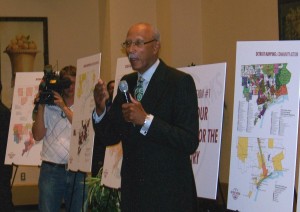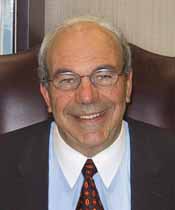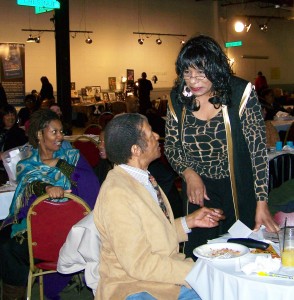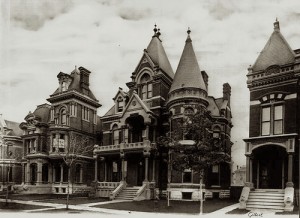DETROIT – Some who attended Mayor Dave Bing’s community forums on his “Detroit Works” plan were skeptical of his assurance that citizens would participate in the planning of Detroit. They noted that Bing did not place on his official advisory board representatives of Citizens District Councils (CDC’s).
Gwendoline Mingo, who heads the Coordinating Council of all Detroit district councils, said state law, which established these councils, requires all Michigan cities to consult CDC’s on any “urban renewal” plan for their areas. She cited Michigan Public Act 344 of 1947, known as the “Blighted Area Rehabiliation Act.” (see below).
P.A. 344 of 1947 reads in part:
“The local official responsible for preparation of the development plan within the district area shall periodically consult with and advise the citizens’ district council regarding all aspects of the plan, including the development of new housing for relocation purposes located either inside or outside of the development area. The consultation shall begin before any final decisions by any local planning agency or local legislative body regarding the development plan other than the designation of the development area.
The consultation shall continue throughout the various stages of the development plan, including the final implementation of the plan. The local officials responsible for the development of the plan shall incorporate into the development plan the desires and suggestions of the citizens’ district council to the extent feasible. A local commission, public agency, or local legislative body of any municipality shall not approve any development plan for a development area unless there has previously been consultation between the citizens’ district council and the local officials responsible for the development plan. A record of the meetings, including information and data presented, shall be maintained and included in official presentation of the proposed development plan to the local legislative body.
The chief executive officer of the municipality shall give the citizens’ district council written notice of any contemplated zoning change, hearing, or condemnation proceedings within the district area. The notice shall be given at least 20 days before the effective date of the change or the date of the hearing or proceedings. Upon receiving a request from the citizens’ district council, the local legislative body shall hold a public hearing on the proposed zoning change or condemnation proceedings. Each citizens’ district councilmay call upon any city department for information.”
“What are they going to do about the millions of dollars allocated by the federal government [under Obama’s recovery act], because they promised to improve the quality of life for poor people and seniors,” Mingo asked.
She said past mayors had “embezzled the money” and she fears the Bing administration plans will fall into the same pattern.
Mingo is still pursuing a lawsuit brought by the residents of Brush Park against the city for its demolition of that neighborhood to benefit corporate developers.
“People said they were going to help us and they did not help,” she said. “The work they said they were going to do they did not do. They got people out of their neighborhoods, as they could give the land to rich developers at low cost or for free, with no property taxes for 12 years.
“That’s why it is necessary for elected district councils to protect the rights of citizens and make sure state and federal money to help the residents is not misappropriated.”
Karen Marie Dumas, who leads the Mayor’s public relations department, denied the citizens’ district councils are being pushed aside.
“The inclusion of a person or a group on the advisory committee does not represent the exclusion of any person or group [from the general planning process]. Everyone will have the opportunity to contribute to the process.
However, there were some questions as to how much of a contribution citizens district councils and citizens themselves would make. At the Sept. 2 community forum, Detroiters like Mingo were allowed to make suggestions, but the moderators allowed them only 25 seconds to make them.
Citizens asked, could members of the CDC’s, as experienced as they are in the planning process, be able to express all their ideas and their wealth of experience in less than half a minute.
Mingo was also skeptical of Bing’s assurances that he was abandoning his plans to use the power of eminent domain to force people out of their homes.

"It's the people, dummy!" Mayor Dave Bing insists Detroit will not be downsized; "It will still be 137 miles"
At the Sept. 22 forum, Bing declared, “I am not going to force anyone to move. It’s not going to happen.”
Mingo said that past mayors pressured people to move by cutting off city services and making them desperate to leave their homes and neighborhoods.
In 2001, before Dumas was involved in city public relations, she herself complained that city officials under Mayor Dennis Archer were making conditions unbearable in the Graimark urban renewal area where she lived. [It is now known as Jefferson Homes, a development of expensive condominiums and home on the riverfront.] Working class residents filed suit to prevent Archer from removing them. In a court settlement, the city allowed some to stay.
At the time, Dumas asked during an interview, “How long would they have us live like this? If they were serious about our staying they should have thought what they were going to do to make conditions safe for us.”
Dumas stated problems included slow police response in an area that became more and more isolated and subject to crime. For a time the city agreed to give the community guard service as provided under federal regulations, after the Graimark area Citizens’ District Council complained of the lack of protection, a specific example of how district councils can help residents then it was withdrawn.
Greg Bowen, who at that time was the PR representative for Archer, said, “There is no way the city could not provide police protection.”
Mingo said at the time that there were illegal actions to get rid of people in urban renewal [long known as “urban removal”] areas. City Councilman Clyde Cleveland at the time equated such actions with “terrorism.” He said bulldozers tore down the historic dental office of Dr. Barbara Womack on Mack, which had been established by her father.
“It disappeared overnight,” Mingo said, recalling this incident.
Cleveland at the time also discussed fires that occurred in vacant houses in the neighborhood.
“I was there,” he said. “I saw it. There were fires at night.”
Brush Park resident Edith Woodberry said that helicopters were involved in the destruction of these houses, which were supposed to be preserved because they were historic structures.
“Someone out to go to jail for it,” she said.
In 2003, the head of Detroit’s Fire Department’s arson squad, Charles Tucker, actually said he was refusing to investigate fires in two Brush Park apartment buildings that his department inspectors classified as “arson.”
“We had to prioritize,” he said, claiming the buildings were hazardous, that the department had no equipment and no leads. He expressed doubt the fires were a “professional job.”
Mingo recalled that homeless people displaced by the urban removal had sought shelter in one of the vacant buildings that went up in flames, and barely escaped with their lives.

Crosswinds CEO Bernard Glieberman asked city to waive requirements to hire Blacks and Detroiters in constructing townhomes to replace Brush Park
There was speculation from some residents that arsonists might have burned the houses down so the land could be given to a development company called Crosswinds Communities, to build apartments to be sold for $75,000 apiece.
Some have voiced suspicion that Mingo herself had been targeted because of her position as a Citizens District Council official, because she was vocal about abuses.
On Nov. 12, 2001, she said, “an odd fire” struck the third floor of her home, which she had used as an office.
“I called 911 for 45 minutes,” she said, “and no one answered. The city provides security for the developers, but it had no security for the residents. The Fire Department claimed the fire was electrical.
In 2005, contractors for the Economic Development Department, authorized by the administration of Mayor Kwame Kilpatrick to work in the area continually made holes in the gas main next to Mingo’s home [by then one of the few remaining residences in the area]. DTE said this represented a fire hazard.
Community leaders throughout the city came to her house to conduct a continuous vigil to protect Mingo and her family from further harm. The gas main was ultimately repaired.
Other concerns at the time included environmental hazards caused by the demolition. Dumas said that when the city demolished some buildings, they failed to remove the debris, creating health and safety hazards.
Mingo added that the city did not take measures to protect residents from asbestos in abandoned buildings as they were torn down. This was confirmed by an inspector from the Michigan Department of Environmental Quality (MDEQ), who said the city did not take measures to prevent the wind from blowing asbestos around the neighborhood.
She also added that city officials dumped soil on the original land, which she suspected was contaminated. She noticed “strange plants” growing in the area, including cabbage with prickles and what looked like brussels sprouts in them, and flowers (not roses) with thorns.
She said people in the area developed breathing problems and many leaders on a number of blocks died, just as the city sought to take their land. Mingo’s own husband died unexpectedly.
Ed. Note: Ron Seigel did a ground-breaking series of dozens of articles for The Michigan Citizen during the decade he decribes, related to the city’s destruction of the Brush Park neighborhood and the East Jefferson area that became known as “Graimark.” He exposed the fact that Mayor Dennis Archer’s son worked for Graimark. Archer’s sister-in-law C. Beth DunCombe headed the Detroit Economic Growth Corporation (DEGC) at the time. The DEGC is the private entity which staffs the Economic Development Department, the Downtown Development Authority, and other pseudo-public agencies.
Mingo continues to pursue a federal lawsuit against the city, “Gwendoline Mingo and the Coordinating Council for Community Development and the Brush Park Citizens District Council v. the City of Detroit et al, Case 2-07 CV15208.” It is being heard by U.S. District Court Judge Denise Page Hood. On Sept. 9, Judge Page Hood held a motion hearing on Crosswinds Communities motion to dismiss the suit, and declared she would take the motion “under advisement.”










Admiring the time and effort you put into your blog and
in depth information you provide. It’s great to come across a blog every once in a while that isn’t the same out of date rehashed material.
Fantastic read! I’ve saved your site and I’m including your RSS feeds to my Google account.